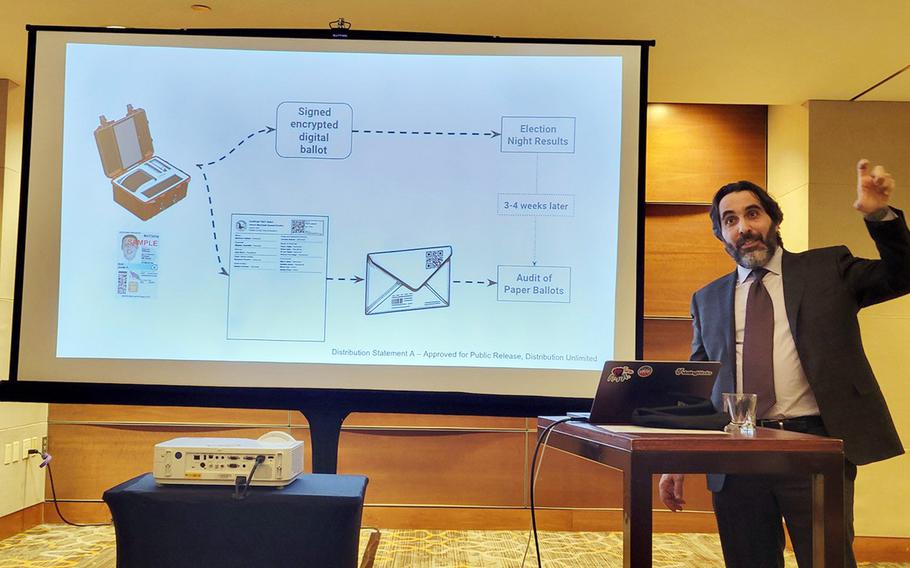
Ben Adida, executive director of VotingWorks, provides a presentation on an early-stage prototype of a deployable voting machine during the National Association of State Election Directors conference in Washington on Feb. 7, 2024. (Joseph Clark/Department of Defense)
Deployable electronic voting machines are now fully functional and could be used in a pilot election as soon as next year, the president of a nonprofit technology firm said this week.
“We now have a fully functional prototype and are a few weeks away from wrapping up our report to [the Defense Advanced Research Projects Agency],” Ben Adida, executive director of VotingWorks and the technical lead on the project, told Stars and Stripes by email Monday.
VotingWorks unveiled an early-stage version of its deployable voting machine in February at the National Association of State Election Directors conference in Washington, D.C. The machine aims to allow service members around the world, even at remote locations, to transmit a signed, encrypted digital ballot to their home precinct for tallying on Election Day.
Service members would use their Common Access Card, which has a built-in digital signature for authentication, to cast their vote on the machine.
Adida said the machines will not be ready for use in this year’s upcoming presidential election in November, but the company is hopeful to deploy them next year.
“We are exploring possible opportunities for a pilot election in early-mid 2025,” he said.
The prototype was developed as part of a research project funded by DARPA to discover methods to make voting easier for troops stationed away from their districts.
“Compared to the civilian population, a lower percentage of active-duty military have voted in recent federal elections,” the Federal Voting Assistance Program states on its website.
The logistics of how the new machines will be deployed to service members in remote overseas locations are still being worked out, Adida said.
“We don’t have a complete deployment plan yet,” he said. “We don’t think it makes sense for VotingWorks, or any vendor, to be required to set up these machines in the field — the machines have to be sufficiently autonomous that military personnel could set it up on their own.”
Adida said troops likely won’t see these voting machines at bases within the United States.
“Stateside bases have reliable vote-by-mail already, so the advantage of a new voting method is less clear,” he said.